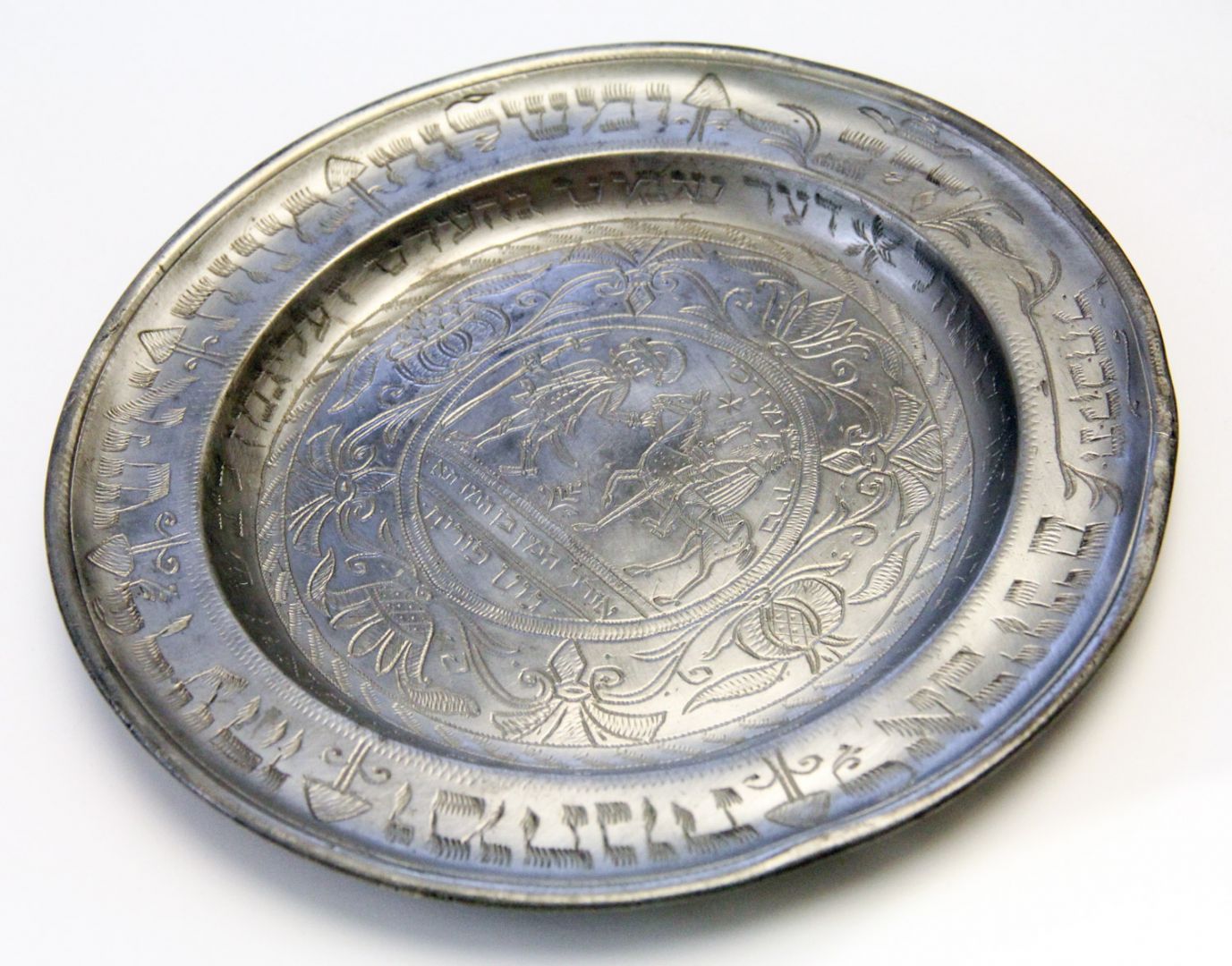3. Hall - 3. view
Purim pewter plate
Purim pewter plate, 1768. In the middle of the plate the most common Purim depiction is visible. A man dressed in fancy clothes is sitting on a horseback and is led by another man by the bridle. The illustration is based on a scene as recounted in Megillat Esther, or scroll of Esther: King Ahasuerus asked Haman what should be done for the man whom the king wanted to honor. As Haman thought he will be awarded, he suggested to be dressed up in royal robe and on the back of a magnificent horse, his enemy should lead him through the streets of the persian king Ahasuerus, Susa. The king honored Mordecai, and had him dressed in royal robes and put him on a horseback, and had the humiliated Haman lead the horse by the bridle. The figures appear in the typical costume of the 18th century, in accordance with the age the plate was made. The inscription around plate are interpretations in Yiddish and the Hebrew text on the rim reads: “Shlach manot ish lere’aho vematanot le’evyonim” (Send choice portions to one another and gifts to the poor), Esther 9:23. is a quote from Megillat Esther.
